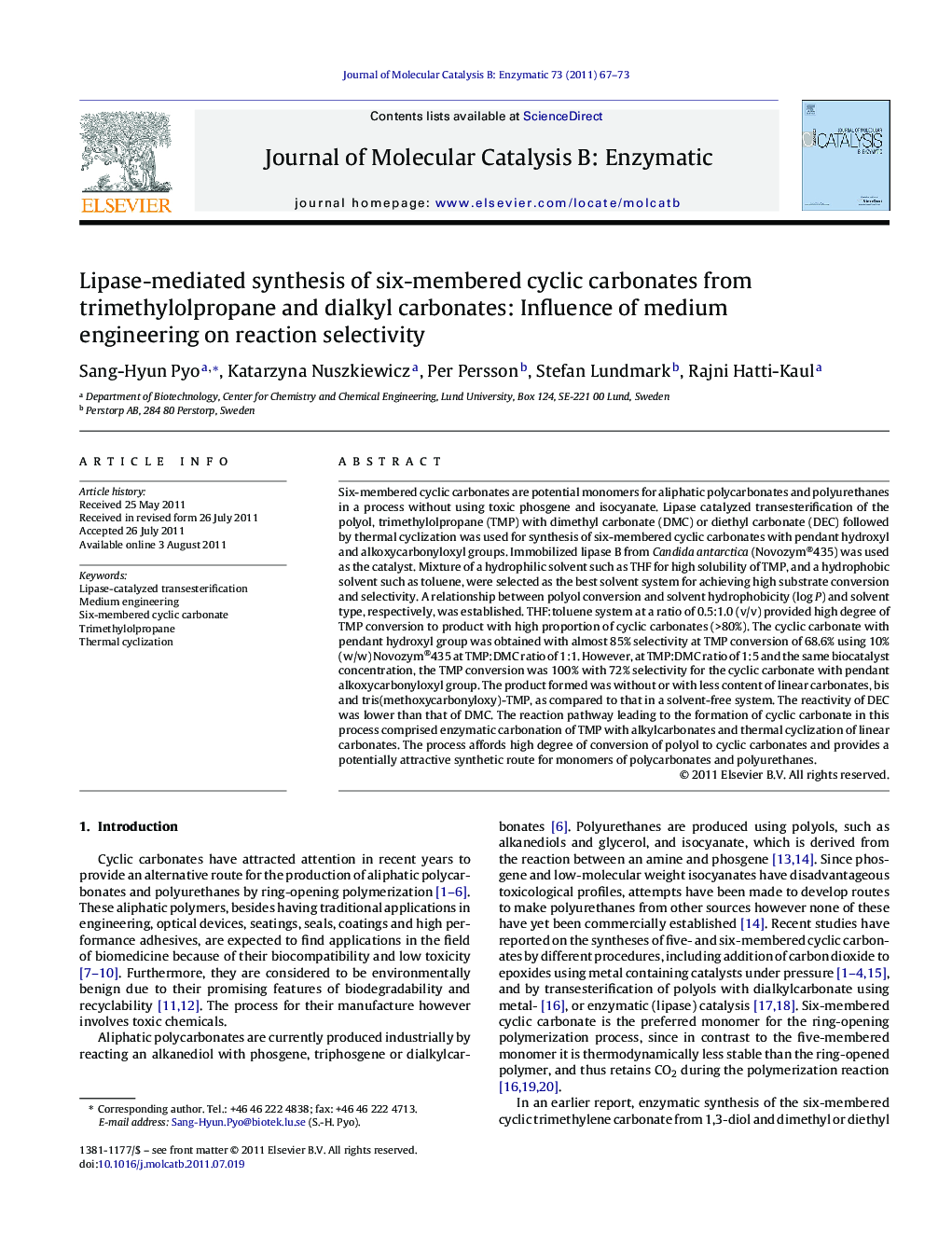| کد مقاله | کد نشریه | سال انتشار | مقاله انگلیسی | نسخه تمام متن |
|---|---|---|---|---|
| 70083 | 48809 | 2011 | 7 صفحه PDF | دانلود رایگان |

Six-membered cyclic carbonates are potential monomers for aliphatic polycarbonates and polyurethanes in a process without using toxic phosgene and isocyanate. Lipase catalyzed transesterification of the polyol, trimethylolpropane (TMP) with dimethyl carbonate (DMC) or diethyl carbonate (DEC) followed by thermal cyclization was used for synthesis of six-membered cyclic carbonates with pendant hydroxyl and alkoxycarbonyloxyl groups. Immobilized lipase B from Candida antarctica (Novozym®435) was used as the catalyst. Mixture of a hydrophilic solvent such as THF for high solubility of TMP, and a hydrophobic solvent such as toluene, were selected as the best solvent system for achieving high substrate conversion and selectivity. A relationship between polyol conversion and solvent hydrophobicity (log P) and solvent type, respectively, was established. THF:toluene system at a ratio of 0.5:1.0 (v/v) provided high degree of TMP conversion to product with high proportion of cyclic carbonates (>80%). The cyclic carbonate with pendant hydroxyl group was obtained with almost 85% selectivity at TMP conversion of 68.6% using 10% (w/w) Novozym®435 at TMP:DMC ratio of 1:1. However, at TMP:DMC ratio of 1:5 and the same biocatalyst concentration, the TMP conversion was 100% with 72% selectivity for the cyclic carbonate with pendant alkoxycarbonyloxyl group. The product formed was without or with less content of linear carbonates, bis and tris(methoxycarbonyloxy)-TMP, as compared to that in a solvent-free system. The reactivity of DEC was lower than that of DMC. The reaction pathway leading to the formation of cyclic carbonate in this process comprised enzymatic carbonation of TMP with alkylcarbonates and thermal cyclization of linear carbonates. The process affords high degree of conversion of polyol to cyclic carbonates and provides a potentially attractive synthetic route for monomers of polycarbonates and polyurethanes.
Figure optionsDownload as PowerPoint slideHighlights
► Synthesis of six-membered cyclic carbonates without using phosgene or isocyanate.
► Medium engineering to improve the product selectivity.
► Lipase-catalyzed transesterification of TMP with dialkylcarbonates.
► Cyclization of linear carbonates to form six-membered cyclic carbonates promoted by temperature.
Journal: Journal of Molecular Catalysis B: Enzymatic - Volume 73, Issues 1–4, December 2011, Pages 67–73